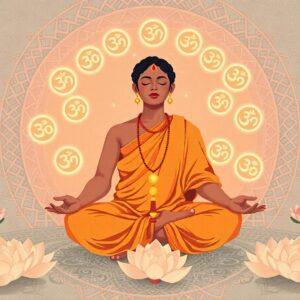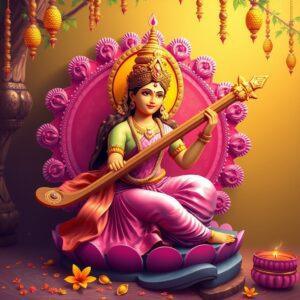
The Vedic Period (circa 1500-500 BCE) stands as a cornerstone of Indian history and the foundation of Hinduism. This era witnessed the composition of the Vedas, Hinduism’s oldest sacred texts. These scriptures offer profound insights into the deities revered and the rituals practiced during that time. This article delves into the principal gods and rituals of the Vedic Period, drawing upon updated research and insights.
The Vedic Pantheon
The Vedic Period boasted a rich pantheon of gods, each with distinct roles and responsibilities. Some of the most prominent deities include:
- Indra: The king of the gods, a formidable warrior akin to Zeus and Thor, renowned for his triumph over the demon Vritra. Indra controlled thunder and rain, essential elements for the Vedic people’s agrarian society.
- Agni: The fire god, central to Vedic rituals. Agni served as the intermediary between humans and gods, carrying offerings to the celestial realm through the sacred flames. His importance is reflected in the numerous hymns dedicated to him in the Rigveda.
- Varuna: The upholder of cosmic order and moral law, similar to the Greek god Uranus. Varuna’s vigilance ensured the proper functioning of the universe and the adherence to ethical principles.
- Soma: A dual entity, both a god and a plant. The intoxicating Soma juice played a vital role in Vedic rituals, believed to bestow immortality and spiritual insight upon those who consumed it. Its preparation and consumption were central to many ceremonies.
- Surya: The sun god, representing life, health, and prosperity. Surya’s daily journey across the sky symbolized the cyclical nature of existence and the promise of renewal.
- Ushas: The goddess of dawn, embodying renewal and hope. Her arrival each morning signaled the beginning of a new day and the triumph of light over darkness.
- Ashvins: Twin horsemen gods, associated with healing and medicine. The Ashvins were invoked for their powers of rejuvenation and their ability to assist those in need.
- Yama: The god of death and the underworld, sharing parallels with Yima in Persian mythology. Yama presided over the realm of the departed and played a role in the cycle of reincarnation.
Vedic Rituals and Practices
Vedic rituals were elaborate and meticulously performed, aimed at maintaining cosmic balance and propitiating the gods. Key rituals included:
- Yajna: The central ritual of the Vedic Period, involving offerings made into a sacred fire. These offerings, often consisting of ghee, grains, and other valuable items, were believed to nourish the gods and ensure their continued favor.
- Soma Rituals: The preparation and consumption of Soma juice were integral to many Vedic ceremonies. These rituals involved pressing the Soma plant, filtering the juice, and offering it to the gods before consuming it for its perceived divine properties.
- Agnihotra: A daily ritual performed at sunrise and sunset, involving offerings made to Agni. This practice maintained a constant connection with the fire god and symbolized the perpetual cycle of day and night.
- Ashvamedha: A royal horse sacrifice symbolizing the king’s power and sovereignty. This elaborate ritual involved the release of a consecrated horse, followed by its eventual sacrifice and a grand feast.
Mantras and hymns from the four Vedas – Rigveda, Samaveda, Yajurveda, and Atharvaveda – were essential components of these rituals. Priests, known as purohits, played a crucial role in conducting these ceremonies, ensuring their proper execution and the transmission of Vedic knowledge.
Poojn.in: Your Source for Vedic Ritual Needs
For those seeking to connect with the rich traditions of the Vedic Period, Poojn.in offers a vast selection of authentic puja items and ritual materials. As India’s largest Dashakarma Bhandar, we provide everything you need to honor the Vedic deities and perform traditional rituals.
- Complete Puja Samagri Collections: Find pre-assembled kits for specific Vedic rituals or individual items to customize your worship. We ensure the authenticity and quality of all our products.
- Dedicated Deity Sections: Explore dedicated sections for major Vedic deities like Indra, Agni, Varuna, and Soma, featuring a wide array of items specific to their worship.
- Essential Ritual Items: Discover pure copper and brass items, traditional dhoop and agarbatti (sandalwood incense sticks, rose incense sticks), sacred threads, mala, ritual bells, conch shells, and specialized yajna materials.
- Camphor for rituals: Explore pure camphor products like camphor butter paper and camphor tablets.
Conclusion
The Vedic Period remains a vital source for understanding the origins and development of Hinduism. The gods worshipped and the rituals performed during this era continue to resonate in contemporary Hindu practices. By acknowledging and respecting these ancient traditions, we connect with a rich spiritual heritage and preserve the values that have shaped Indian culture. Whether seeking deeper knowledge or engaging in Vedic rituals, understanding their significance enhances one’s spiritual journey. Explore Hinduism: A Celebration of Diversity and Tradition for further insights.


